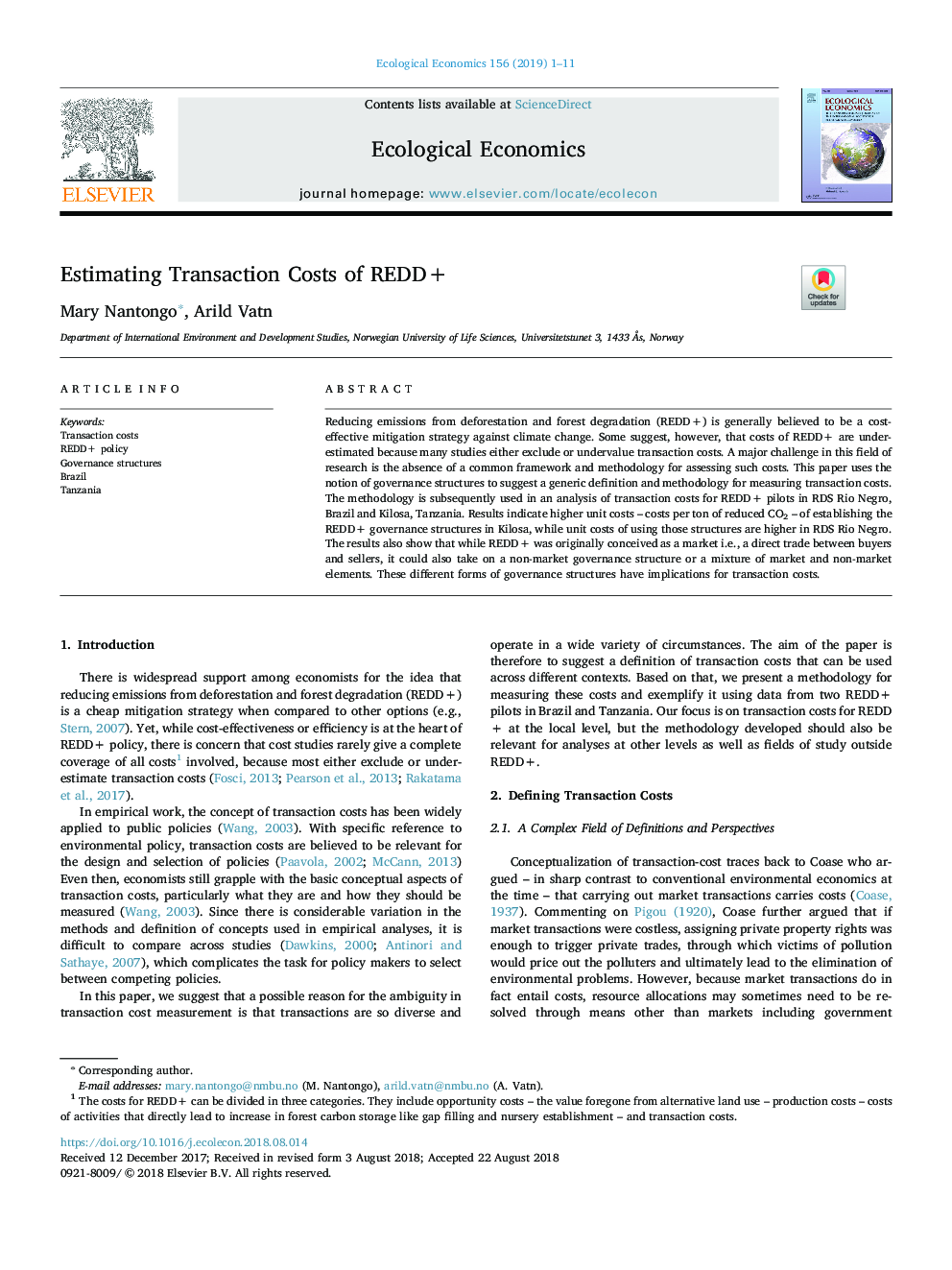| Article ID | Journal | Published Year | Pages | File Type |
|---|---|---|---|---|
| 10147129 | Ecological Economics | 2019 | 11 Pages |
Abstract
Reducing emissions from deforestation and forest degradation (REDD+) is generally believed to be a cost-effective mitigation strategy against climate change. Some suggest, however, that costs of REDD+ are underestimated because many studies either exclude or undervalue transaction costs. A major challenge in this field of research is the absence of a common framework and methodology for assessing such costs. This paper uses the notion of governance structures to suggest a generic definition and methodology for measuring transaction costs. The methodology is subsequently used in an analysis of transaction costs for REDD+ pilots in RDS Rio Negro, Brazil and Kilosa, Tanzania. Results indicate higher unit costs - costs per ton of reduced CO2 - of establishing the REDD+ governance structures in Kilosa, while unit costs of using those structures are higher in RDS Rio Negro. The results also show that while REDD+ was originally conceived as a market i.e., a direct trade between buyers and sellers, it could also take on a non-market governance structure or a mixture of market and non-market elements. These different forms of governance structures have implications for transaction costs.
Related Topics
Life Sciences
Agricultural and Biological Sciences
Ecology, Evolution, Behavior and Systematics
Authors
Mary Nantongo, Arild Vatn,
